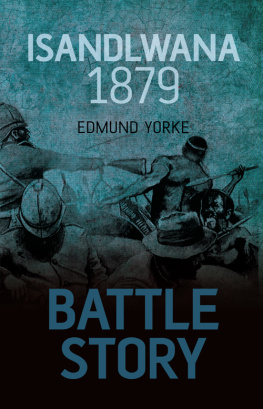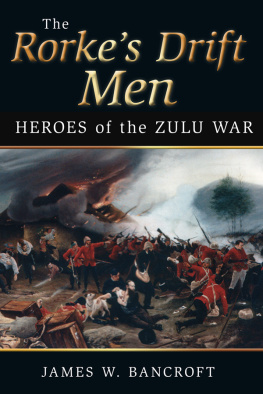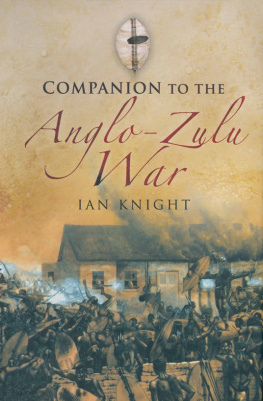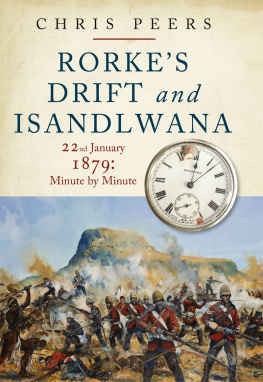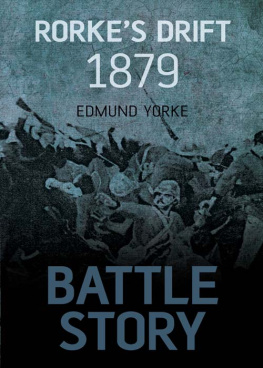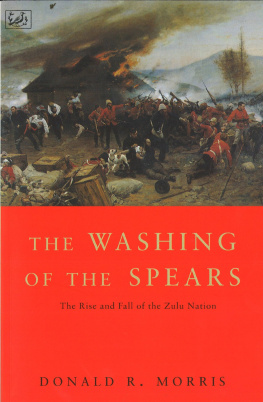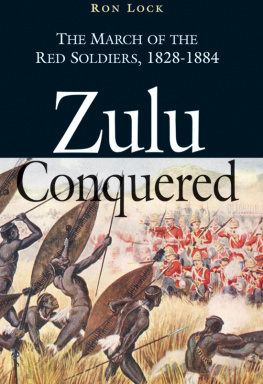
This edition is published by Muriwai Books www.pp-publishing.com
To join our mailing list for new titles or for issues with our books muriwaibooks@gmail.com
Or on Facebook
Text originally published in 1948 under the same title.
Muriwai Books 2017, all rights reserved. No part of this publication may be reproduced, stored in a retrieval system or transmitted by any means, electrical, mechanical or otherwise without the written permission of the copyright holder.
Publishers Note
Although in most cases we have retained the Authors original spelling and grammar to authentically reproduce the work of the Author and the original intent of such material, some additional notes and clarifications have been added for the modern readers benefit.
We have also made every effort to include all maps and illustrations of the original edition the limitations of formatting do not allow of including larger maps, we will upload as many of these maps as possible.
ZULU BATTLE PIECE:
ISANDHLWANA
by
SIR REGINALD COUPLAND
TABLE OF CONTENTS
Contents
TABLE OF CONTENTS
PREFACE
NEARLY seventy years have passed since Isandhlwana, but, except on one or two minor points which will probably never be settled, there is sufficient evidence to reconstruct the course of the battle with reasonable certainty, (1) There are detailed official reports, most of which are reproduced in the blue-books: an examination of the files at the Public Record Office shows that nothing of importance was omitted from the published text. Another official source is the Narrative of Field Operations connected with the Zulu War , prepared at the War Office soon after the event and published in 1881. (2) A few eyewitness accounts by survivors of the battle and the defence of Rorkes Drift, other than those given in the official reports, have been preserved. Some Zulu evidence has also survived. When I visited the battlefield last winter, I interviewed a Zulu over eighty years old, who had taken part in the fight as a young warrior of the Nkobamakosi regiment. (3) Of contemporary unofficial narratives the most valuable is Norris Newmans In Zululand with the British (London, 1880). He was the only newspaper correspondent with the British troops at that stage of the campaign, and, though fortunately he was not present at the battle, he was on the ground a few hours after it was over. Of other books written at the time, the most important, though not the most objective, is Lt.-Col. E. Durnfords A Soldiers Life and Work in South Africa (London, 1882). (4) There is very little new evidence, though some new interpretation, in the later secondary authorities. The most recent and detailed of these is the Hon. Gerald Frenchs Lord Chelmsford and the Zulu War (London, 1939).
My grateful thanks are due to the Rhodes Trustees for assisting me to go out to South Africa and thus, as a pleasant diversion from other work, to visit Isandhlwana; to Principal Raikes and Professor J. Phillips of the University of the Witwatersrand for facilitating my expedition to the battlefield in every way; to Mr. Frank Hawkes of the same University for taking on my behalf a series of excellent photographs, some of which are reproduced in this book; to Mr. V. M. P. Liebbrandt, District Commissioner at Nqutu, for organising and supervising my visit to the site; and to Mr. H. C. Lugg and Mr. D. Bowden for allowing me to draw on their intimate knowledge of Zululand and the Zulus.
I am also deeply indebted to my friends, Sir Ernest Swinton, Professor Cyril Falls and Professor Eric Walker, for reading and most kindly commenting on the proofs. The assistance given me by Mr. G. E. Metcalfe at all stages of the work, and not least in the drawing of the maps, has been invaluable.
R. G.
WOOTTON HILL,
May, 1948.
LIST OF PLATES
1 Isandhlwana from East
2 The Plain, looking South East from the foot of Isandhlwana
3 Isandhlwana from East North East
4 Isandhlwana from the col
5 Looking North-North-East from high up on North slope of Isandhlwana
6 The slope from the Plateau looking East from the foot of Isandhlwana
7 Buffalo River
8 Looking South East from the col
9 Oscarberg Hill and Mission-station from North East
LIST OF MAPS
1 The Campaign of Isandhlwana
2 Isandhlwana
3 Sketch map showing the position of the Oscarberg Mission-station, and the Rorkes Drift Defences
PRELUDE
1
THE ZULUS are the most famous of all the native peoples of South Africa, and they owe their fame to their military record. None of the other well-known Bantu folkBasuto, Pondo, Swazi, Matabelefought as the Zulus fought. For sixty or seventy years their armies were a constant menace to the peace and safety of their neighbours, and it was not only other black men who learned to their cost how dangerous they were. Twice in that period the Zulus were at open war with white men, with the Boers in 1838, with the British in 1879. Both of those wars ended, as they were bound to end, in overwhelming Zulu defeat; but both of them began with Zulu victories so complete, so decisive at the moment, so grimly dramatic, that they will never be forgotten. The scene of the second victory was Isandhlwana.
The Zulu power was the creation of King Chaka, a despot of unusual brutality whose career of conquest earned him the title of the black Napoleon. Before his day the Zulus were only one minor Bantu clan of the many which for generations past had been drifting south-eastwards from the tropical heart of Africa. By the end of the fifteenth century this great race-migration had reached the Zambesi valley. By the end of the eighteenth it had come up against the sea along the east coast of South Africa. It was soon after that, at about the time of Waterloo, that Chaka became King of the Zulus and began to attack and subdue the neighbouring tribes. Hitherto intertribal warfare, though as chronic a feature of savage as of civilised society, had not, it seems, been very destructive. Defeated tribes had lived to fight another day. Their conquerors had been content with submission and tribute. But Chaka fought to destroy. As far as he could, he blotted his victims out. He carried off the women and the cattle. He drafted the surviving men and boys into the Zulu army. By 1823 he was undisputed master of the whole area which now constitutes the Province of Natal. The Xosas, Pondos and other Kaffir tribes had been pushed southwards down the coast. The Basutos, soon to be consolidated by their great chief, Moshesh, had found refuge in the little mountain country that bears their name. The Matabele, led by Mosilikatzi, an offshoot of the Zulus and no less militant, had retreated to the high veld of the interior. That was the limit of Chakas triumphs. In 1826 his brother, Dingaan, murdered him and seized the throne. {1}
Dingaan, though not much less cruel than Chaka, was not at heart a warrior. He maintained the Zulu army, but he did not launch it on new campaigns of conquest. The outstanding war of his reign, the war with the Boers, began, it is true, with a flagrant act of aggression on his part. None the less, it was, in the strictest sense, a defensive war. It was one of the many conflicts which had inevitably resulted from the expansion of European settlement northwards from the Cape.


